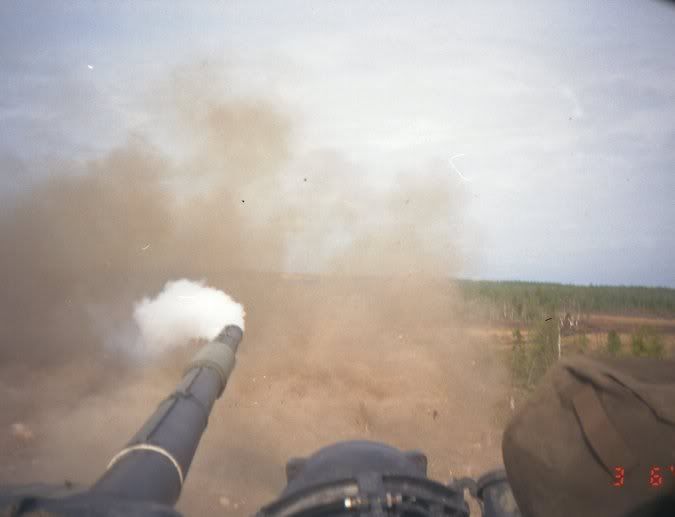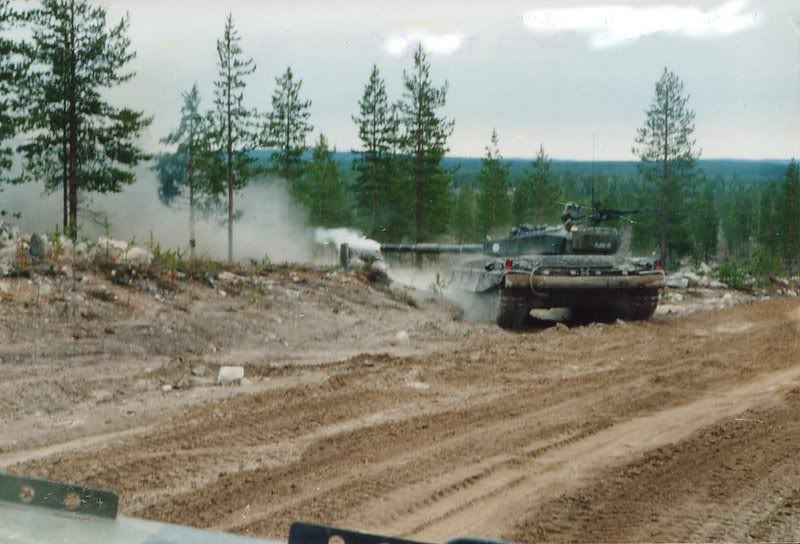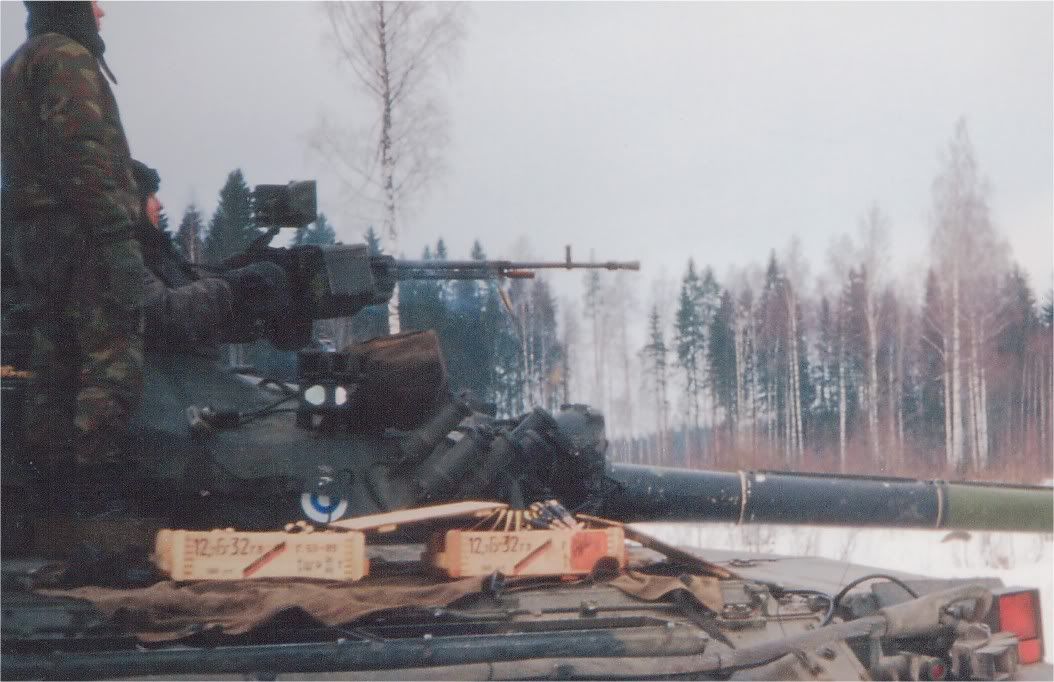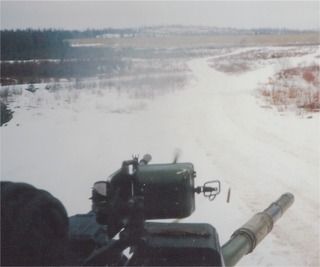
Jippo
-
Posts
71 -
Joined
-
Last visited
Never
Posts posted by Jippo
-
-
By the way, do you really think it makes a difference if you & your opponent use the same or different tracer color?
I mean that although it may ease the situation a little bit when deciding what to do, but you can't base any judgement on that thing alone. You should always be aware of who is the enemy by some other means not just tracer color alone. That means visual ID on the most cases, and in most others somebody else is already shooting at you so it is ok to shoot back. So in which way does the difference in tracer color help to make identification?
I'f you are going to shoot the first round you must ID the target, if the target is already shooting at you he's the enemy. If two other parties are fighting with each other, then you should be already having a pretty good idea who's who just by looking at their respective locations. On top of that there shouldn't be that many tracers flying in normal infantry combat anyways, at least not in this part of the world there isn't.
-
So I should trust wikipedia instead of my own eyes.

Btw. Did you notice that wiki-page you gave has links Degtyaryov plant promotional videos where they shoot (guess what) tracers. Actually second of my videos is from the same shooting as their advertisements.

http://youtube.com/watch?v=8imIgaFTfLI
[ June 20, 2007, 01:22 AM: Message edited by: Jippo ]
-
Couple of related videos:
http://youtube.com/watch?v=qK6OP8I_VsE&mode=related&search=
It seems that the tracers don't change color when crossing a border.
I think the lesson here was not to trust tracer color judging who's your enemy or not. Remember: friendly fire isn't.
-
Sure they would change the color as the SU industrial system insisted on using the same components on everything they produce from helicopters to tanks (Mi-8 has some same instruments as T-72)!Originally posted by unsobill:yea i was confused first as well thinking what "real" russian battalion would use red tracers until i've seen flag on the tank of his screens.

I really don't think they would bother about that kind of things with the tiny FDF order.

Sure, not a problem.i guess he also represent russian side along finnish on these forums,
 due the fact most of "average" americans consider everything that cold and snowy as "Russia".
due the fact most of "average" americans consider everything that cold and snowy as "Russia". 
 AK vs AR fight anyone???
AK vs AR fight anyone???
-
Couple of pics just for fun:


-
It was 1980's/90's Soviet stuff. You can see the boxes in the pics. The difference is that I have used almost solely AP-t or API-t, maybe Ball-t is green? I have seen that on few occasions and I should think it was red too, but I may remember it wrong there.
Also I haven't seen SU/WP tracers in smaller calibers than 7,62x53R, but for all I can remember they were red: PKM/PKT, NSV, KPV, all the way up 125mm.
[ June 19, 2007, 09:27 AM: Message edited by: Jippo ]
-
Oh ****!

-
Where do the ammunition boxes in the picture come from? What is their color code? What color is their tracer?


-
All of the ones I have seen burnt red, and that is as rare as 7,62x53R and 12,7x108. I have never seen a SU tracer that burned green, although that is not to say that there isn't.
And the tip of the bullet is black violet as in case of API-t (all calibers), green in the case of normal -t. Maybe that is where your idea of green comes from. But if the weapon is NSV or DshK in the video, and the ammunition is API-t I can assure you it is red (burning doh!).
[ June 18, 2007, 02:03 AM: Message edited by: Jippo ]
-
They're red. </font>Originally posted by unsobill:</font><blockquote>quote:</font><hr />Originally posted by Jippo:
</font><blockquote>quote:</font><hr />Originally posted by Nidan1:
I thought Soviet tracers were green, are we sure its a 12.7 Russian made or just an M-2?
-
They're red.Originally posted by Nidan1:I thought Soviet tracers were green, are we sure its a 12.7 Russian made or just an M-2?
-
Sure, difference here is that instead of molding a piece for cutting and covering to prevent back blast & directing energy where wanted, we have a HE charge which is actually 5-10cm off the cutting point. Also the energy of HE round is designed to burst to the sides, and not towards the fuse. On top of that, without knowing the exact composition of the steel used in tracks, I very much doubt it is construction grade mild steel.Originally posted by Jeff Duquette:[QB] For the track throwing thing, high explosives are used by combat engineers as cutting charges for rail road tracks, bridge trusses, etc. So explosives can cut construction grade steel. But fuzing, direction of the blast wave and explosive tamping are all crucial to maximizing target effects or target cutting potential.
Depending on the fusing there might not be any kinetic energy of a direct hit as the round goes off, blast is directed to sides mostly and shrapnel surely hasn't got enough power to knock out roadwheel or or tracks themselves.But track links and pins, road wheels, sprockets, etc are perhaps more vulnerable to the kinetic energy of a direct hit, or blast or splinters.Of course (depending on the fusing and caliber) tracks could be taken out by HE only, but I would like to see these fellows here describe the conditions where & why:
"You should atleast be able to take out the tracks using HE."
"Cos it is enough to take out tracks, thats why."
Are just simply stupid statements with zero information value.
-
IIRC, track of 40 ton tank (T-72) weighs 3 tonnes. I have seen rocks that larger than your fist reduced in to sand just simply getting in between of the drive wheel & the track. Links on that track are at thickest point 50mm thick (or so), and are designed to take the weight of the tank for thousands of kilometres on road.
I have also seen HE mortar hits on sandy ground that have penetrated on the (softish) soil no more than 20mm.
I woud like to think that HE is not a destroyer of armoured targets, but you can prove me wrong. (Not ment to you Shifty)
-
Not to be rude and blunt, have you ever seen tracks of a MBT? Where would this energy of unknown quality show it's power and destroy the track? And, more important question is, how?
-
What energy, where & why?
Question remains unanswered.
-
Why?Originally posted by Ankh Morpork:You should atleast be able to take out the tracks using HE.
-
One thing you have to realise and take in to account is the fusing. If the fusing is set to sensitive the smallest twigs and leafs are enought to set the round off instantly. When such a round hits armor, it will detonate before penetrating anything. Upon detonation the round will createtulip shape volume of shrapnel which have high velocity but very low mass - and thus will not penetrate anything that could be refered to as armor.
-
Same here. I thought the demo was pretty crap, but decided to buy the game anyway. I like the game much better, a lot actually.Originally posted by tom3d:hmmmm I really didin´t like about the DEMO, and I like too much the game, everybody have a self opinion about the game, I really like. So is up to you.
-
Why not use them?
In the real life they used also cannons that had no armor at all and which took ages to haul in to the firing position.

You don't have to be stupid and bring them into view of at-guns or tanks, or at grenade throwing distance of trenches either. Use them against infantry from 500m or further, just like the were used. Their powerful HE rounds will tear gaping holes in to enemy ranks.
[ June 12, 2007, 12:29 AM: Message edited by: Jippo ]
-
Big HE shells work fine for those targets.Originally posted by Splinty:Has anyone tried using Wespes or Hummels against pillboxes or trenchlines? I'm thinking that those are about the only useful targets available in the game for our tracked arty pieces. I'll try testing this out once I figure out the map editor.
I fail to see any problem with ´Wespe's etc. Inrect fire is off map for obvious reasons, so what is the problem in having artillery pieces for direct fire role like they were hisorically used? Would you be happier without any direct fire artillery assets???
This thing about their usefulness is totally up to mission designers. In pure infantry battle the siude that has a wespe is with big advantage. Hauling artillery pieces to aid e.g. infantry assault into fortified positions was rather common.
-
-
They come in staff infantry units atleast. I haven't seen individual snipers in the unit roster, but of course you can detach the sniper from the squad and give him individual orders when you are in game.
-
Good post.

-
Flank far right, first have all your tanks disable the furthest guns. Do it preferably so that all your tanks vs. one gun at any given time.

Stryker MGS in action (first pics?)
in Combat Mission Shock Force 1
Posted